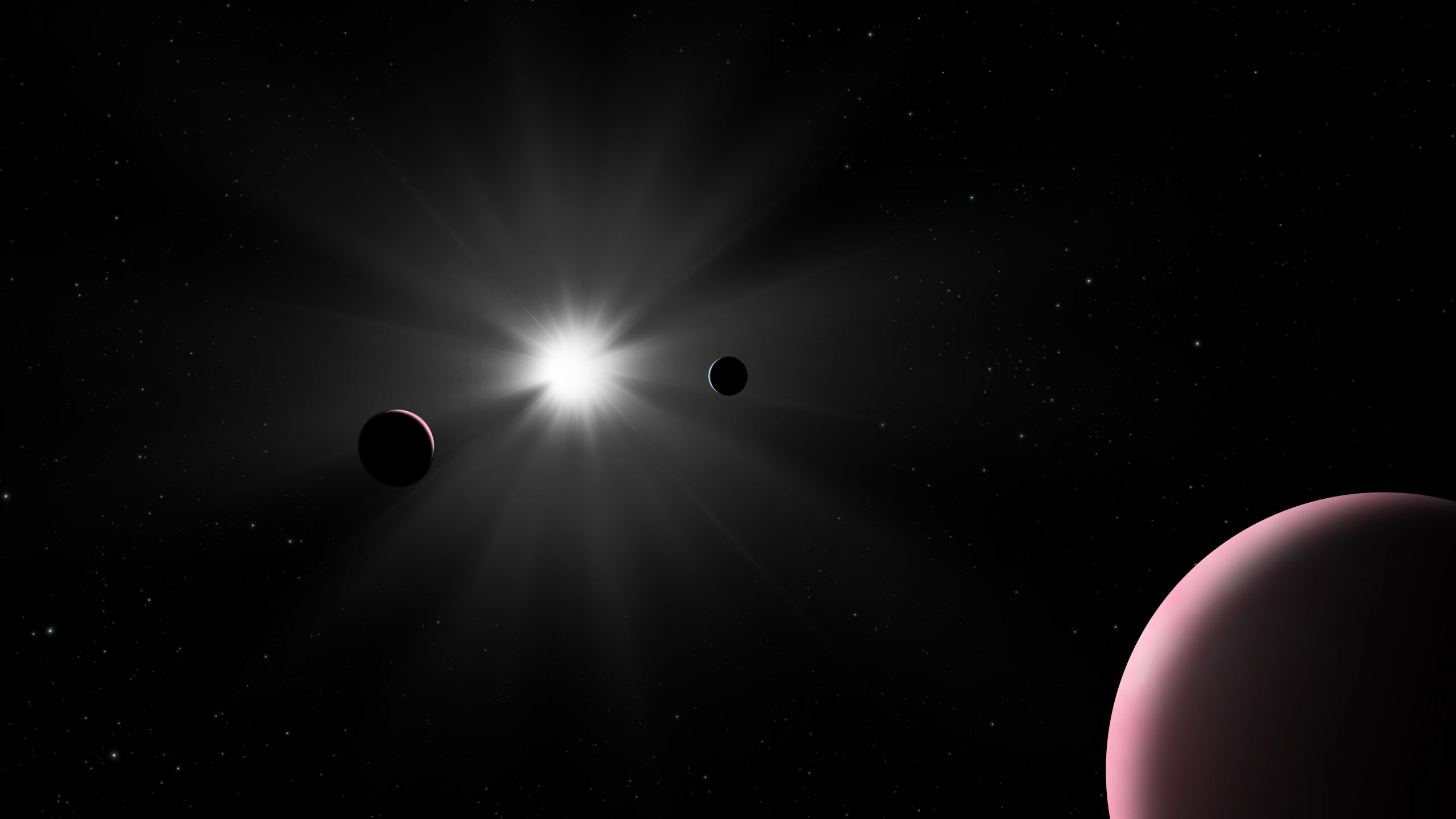While studying two of the known planets in a nearby star system, the European Space Agency’s (ESA) space telescope unexpectedly also recorded the pre-constellation of a third planet – which is no small surprise to researchers. The astonishing discovery reveals exciting details about this extraordinary planet that researchers have not had the opportunity to study before. The Hungarian member of the Khufu Scientific Steering Committee is Laszlo Kis, Director General of the ELKH Center for Research in Astronomy and Earth Sciences (CSFK). An article summarizing the results of the observations was published in Nature Astronomy on June 28.
Khufu (CHaracterizing Exoplanet Satellite, “Exoplanet Characterizing Satellite”, is a space telescope operating in Europe with the primary purpose of identifying already known exoplanets.
This time, Khufu studied the planets of Lupi, a nearby star similar to our Sun in the constellation of the Wolf (Lupus). The celestial body, less than fifty light-years away, is so bright that it can be observed with the naked eye. The system’s three exoplanets were discovered in 2019 using the HARPS (High Resolution Radial Velocity Planet Finder) telescope in Chile, as examined by NASA’s TESS (Transiting Exoplanet Survey Satellite), which also showed transits of the inner planets (B and c), that is, their passage in front of a stellar disk. Khufu also aims to examine these two celestial bodies with greater accuracy.
“Transit systems such as the N Del2 Lupi are so important for understanding planetary formation and evolution that we can compare many planets orbiting the same bright star in great detail,” says Letitia Delreese, a researcher at the University of Liège, who is leading the work.
It was a big surprise to Khufu researchers when they studied Planet C and noticed that another celestial body had passed in front of the No 2 Lobi disk.
The transit of Nű2 Lupi d was particularly surprising because the planet orbits farther from the star than its two companions.
While planets ab and c orbit their stars in only 11.6 and 27.6 days, Nű2 Lupi d needs more than a hundred days to do so. With such distant celestial bodies, the chances of passing in front of the star’s disk are much less. Thanks to luck and Khufu’s precision, there was an unprecedented opportunity to conduct an in-depth examination of the orb.
During transit, an exoplanet obscures a small portion of the star’s disk, causing a slight dip in starlight. The degree of light reduction can be used to infer the size of a planet and even provide information about its orbit and potential atmosphere. Thus, transit measurement is a proven method for studying exoplanet systems. Thanks to the precise brightness measurements made by Khufu, the researchers were able to determine the size of the three planets with extreme accuracy.
The amazing Nű2 Lupi d proved to be a celestial body with a radius two and a half times larger than Earth, orbiting around the central star in 107 days.
– “The radiation from a star reaching the planet is also less than that of many other known exoplanets. In our solar system, Nű2 orbits in the distance between Lupi da Mercury and Venus,” says David Ehrenreich, a researcher at the University of Geneva in Switzerland, who was involved in Write an essay on discovery.

Nű2 Lupi d will also be an excellent subject for the soon-to-be-launched James Webb Space Telescope (JWST). The problem with many transiting planets is that their central star is too weak to study the planet’s features more accurately. Nű2 Lupi, on the other hand, is one of the brightest stars, and its d planet is a prominent representative of the category of filling the void – transiting planets orbiting the star.
As a result, it also promises to be a suitable target for studying the extrasolar atmosphere that is not too hot.
Although none of the celestial bodies in Nű2 Lupi orbits are within the habitable zone, they still provide a great opportunity to study the evolution and internal structure of planets or to discover their companions. The planet’s radius values measured by Khufu at high resolution, combined with mass data from previous Earth measurements, give the average density of each celestial body. Knowing this, it is also possible to map the internal structure of the planets. According to the results of the research, the innermost planet B consists mainly of rocks, so it belongs to the category of super-lands. In contrast, for planets C and D, measurements indicate a high content of water and the presence of an extensive atmosphere consisting of hydrogen and helium. Although its water content is much higher than that of the Earth’s surface, in their case it occurs in an illiquid state. According to the researchers’ calculations, on planets Nű2 Lupi c and d, water can be present in a layer of high pressure ice or in the atmosphere surrounding the surface, in the form of hot steam.
Due to its properties, the Nű2 Lupi system could be an ideal target for detecting exoplanets or even ring systems surrounding planets. Thanks to the high resolution of the Khufu Space Telescope, it is suitable for this mission, as it provides an opportunity to explore smaller celestial bodies, even those the size of Mars.












































